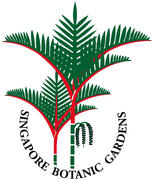Nomenclature
Accepted name/Authority/Place of publication:
Merremia discoidesperma (Donnell-Smith) O'Donell, Lilloa 6: 495. 1941.
Synonyms:
Ipomoea discoidesperma Donnell-Smith, Bot. Gaz. 14: 27. 1889. TYPE. Guatemala. Alta Verapaz: Pensamalá, June 1885, von Turckheim 744 (holotype US [×2]).
Operculina populifolia Hallier f., Bot. Jahrb. Syst. 16: 550. 1893. TYPE. Cuba. Bayamon, Wright (isotype MO).
Description
Habit:
Liana 8-20 m long or growing into the forest canopy, stems round, fistulose, longitudinally striate, glabrous to hirtellous, to 6 mm in diameter. Petioles slender, with a groove down the ventral side, hirtellous, 16-80 mm long.
Leaves:
Leaves simple, coriaceous, cordate, apices occasionally attenuate, glabrous to hirtellous on both surfaces (Mexican specimens tend toward increased pubescence), with the pubescence most prominent along the nerves; veins depressed on the upper surface and prominent below, 60-140 mm long and 35-120 mm wide.
Inflorescences:
Inflorescence a modified cyme or flowers solitary; peduncles equal to or shorter than the subtending petioles of solitary flowers, longer in compound inflorescences, 35-100 mm long; bracts two, scale-like, caducous, to 2 mm long; pedicels clavate, smooth or faintly striate, thicker distally, 10-15 mm long.
Flowers:
Sepals ! equal, ovate, edges membranous, apically rounded to acute, enlarging in fruit, 20-26 mm long and 10-16 mm wide, in dried material the calyx becomes dark brown or black; corolla funnelform, toothed, glabrous, yellow, 48-60 mm long and 30-35 mm wide; stamens unequal, not exserted from the tube, filaments adnate to the corolla for up to one half their length, bearded where attached and glabrous where free (Gunn reported the distal one third of the filaments to bear crinkled hairs), anthers spirally twisted at maturity, 3-5 mm long; pollen smooth, polyrugate; ovary ovoid, glabrous, to 3 mm in diameter, surrounded by a thick lobed disc; style simple, glabrous, equal to or exceeding the androecium, stigma biglobose, 2-3 mm in diameter.
Pollen:
Pollen smooth, polyrugate.
Fruits:
Fruit a tan to brown hyaline capsule, irregularly dehiscing, 30-40 mm in diameter, surrounded by the accresent, woody, blackish calyx
Seeds:
Seed single, a four-lobed cushion shaped oval, bearing a circular hilum on one side and an impressed cross on the reverse, black, hard, velutinous when fresh, becoming glabrous and shiny, 18-25 mm in diameter.
References:
Austin, D. F. & G. W. Staples. Convolvulaceae in Flora Neotropica [unpublished data].
Biogeography, Ecology and Natural History
Distribution Map:

Distribution:
Distributed in southern Mexico, Guatemala, Nicarágua, Costa Rica, Cuba, Haiti and the Dominican Republic.
References:
Austin, D. F. & G. W. Staples. Convolvulaceae in Flora Neotropica [unpublished data].
Other information
Common names and uses:
Boton de terciopolo (Guatemala).
The seeds, known as ‘Mary’s bean’ float as far away as the British Isles, where they are collected from beaches and used as talismans or good luck charms for women during childbirth. The name refers to the blessed virgin, Mary.
Authorship for webpage
Editor:
George Staples, Esmond Er
Contributors:

Classification:

Add new comment